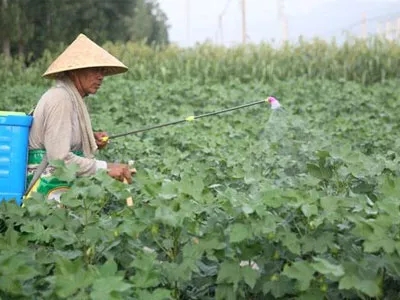Pesticide auxiliaries are auxiliary substances added in the processing or use of pesticide preparations to improve the physical and chemical properties of pesticides, also known as pesticide auxiliaries. The additive itself has no biological activity, but it can affect the control effect.
Pesticide varieties, different physical and chemical properties, dosage form processing requirements are also different, so the need for different additives.
Packing or carrier
Solid inert mineral, plant or synthetic substances added to adjust the content of finished products or improve the physical state during the processing of solid pesticide preparations. Commonly used attapulgite, diatomite, kaolin, clay and so on. Its function is to dilute the active drug, the second is adsorption active drug. Mainly used for making powder, wettable powder, granule, water dispersible granule, etc.
Emulsifier
For the original incompatible two-phase liquid (such as oil and water), can let one of the liquid in a small liquid bead stable dispersion in the other phase liquid, the formation of opaque or translucent emulsion, the role of the surfactant called emulsifier. Such as calcium dodecyl benzene sulfonate. Used for processing emulsion, water emulsion and micro emulsion.
Wetting agent
Wetting agent, also known as wet spreading agent, is a kind of surfactant which can significantly reduce the tension of liquid-solid interface, increase the contact of liquid to solid surface or increase the wetting and spreading of solid surface. Such as saponin, sodium dodecyl sulfate, pull powder, etc.It is mainly used for the processing of wettable powder, water dispersing granule, water agent and water suspension agent as well as spray assistant.
Penetrating agent
Surfactants that can promote the effective constituents of pesticides into the treated objects such as plants and harmful organisms are mostly used in the preparation of high osmotic pesticide preparations. Such as penetration agent T, fatty alcohol polyoxyethylene ether and so on.
Gelling agent
An additive that increases the adhesion of pesticides to solid surfaces. Due to the improvement of adhesive properties of the agent, it is resistant to rain washing and improves the retention. Such as in the powder to add the right amount of greater viscosity of mineral oil, in the liquid pesticide to add the right amount of starch paste, gelatin and so on.
stabilizer
It can be divided into two categories: one can inhibit or slow down the decomposition of pesticide active components, such as antioxidants and anti-photohydrolysis agents; Another class can improve the physical stability of the preparation, such as anti-caking agent and anti-settling agent.
Synergistic agent
Synergistic agent itself has no biological activity, but can inhibit the detoxification enzyme in the body of organisms, and when mixed with some pesticides, can greatly improve the toxicity and efficacy of pesticides compounds. Such as synergistic phosphorus, synergistic ether, etc. It is of great significance to control resistant pests, delay resistance and improve control efficiency.
Security agent
Compounds that reduce or eliminate herbicide damage to crops and improve the safety of herbicide use.
In addition, there are foaming agents, defoaming agents, antifreeze agents, preservatives and warning colors and other additives
Post time: Dec-13-2021


